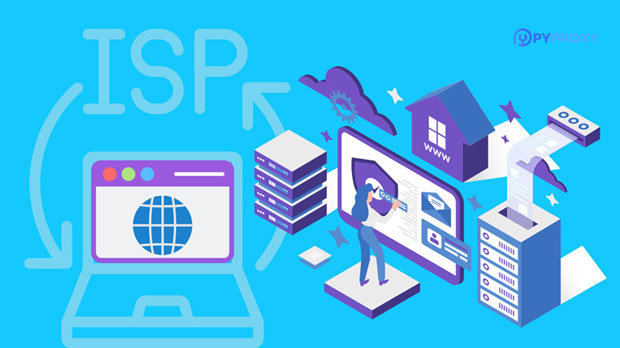What is the use of Socks5 residential proxies in SEO and web crawlers?
In the rapidly evolving digital landscape, SEO (Search Engine Optimization) and web scraping (or crawling) are critical tools for businesses, digital marketers, and researchers. One of the key elements that enable these processes to be more efficient and reliable is the use of proxies, specifically Socks5 residential proxies. These proxies play a crucial role in simulating real user behavior, avoiding IP bans, and ensuring data scraping activities run smoothly. Their application in SEO and web crawling has become an indispensable asset for anyone looking to gain a competitive edge in the digital world. This article will delve deep into the role and benefits of Socks5 residential proxies in SEO strategies and web scraping activities. Understanding Socks5 Residential ProxiesSocks5 is a type of internet protocol used for routing internet traffic through a proxy server. Unlike traditional HTTP proxies, which only work with web traffic, socks5 proxies can handle all types of internet protocols, such as FTP, SMTP, and others. Residential proxies, in particular, are IP addresses that are assigned to real residential users by Internet Service Providers (ISPs). These proxies are valuable in SEO and web scraping due to their ability to mask the actual IP address of a user, thus offering enhanced anonymity and flexibility in browsing.When paired with SEO and web crawling strategies, Socks5 residential proxies become powerful tools. They are typically less detectable than data center proxies because they mimic the traffic of regular internet users, making it harder for websites to block or restrict access. This ability is critical in SEO efforts where access to competitors' websites, ranking data, and performance metrics is often required, and in web scraping where bulk data extraction is necessary.SEO and the Role of Socks5 Residential ProxiesSEO is a dynamic field that requires businesses to constantly monitor and adapt to search engine algorithms, competitor strategies, and ranking performance. The use of Socks5 residential proxies in SEO can bring several advantages, particularly when businesses need to conduct tasks like keyword research, competitor analysis, SERP (Search Engine Results Page) tracking, and link building without raising red flags.1. SERP Tracking and Monitoring:Socks5 residential proxies are essential when tracking keyword rankings and monitoring SERPs across different regions. Search engines, like Google, often show different results based on geographic location, search history, and personalization. By using Socks5 residential proxies, businesses can simulate searches from various locations and get unbiased, accurate results. This allows SEO professionals to track their website's performance and their competitors' rankings in real time without the risk of being blocked for making too many requests from the same IP address.2. Competitor Analysis:In order to maintain a competitive edge, businesses need to regularly analyze their competitors' websites. This includes monitoring their backlinks, content, keyword strategies, and overall online presence. Using residential proxies helps avoid detection while scraping competitor data, ensuring that businesses can stay ahead of trends without being flagged for suspicious activity. With Socks5 proxies, the data scraping process becomes seamless and undetectable.3. Keyword Research and Content Strategy:Keyword research is a cornerstone of effective SEO. With the help of Socks5 residential proxies, businesses can gather more accurate and diverse search results by simulating searches from different geographical locations and devices. This helps marketers identify regional trends, new keywords, and content opportunities that may not appear in localized search results. The anonymity provided by residential proxies also allows businesses to perform competitor keyword research without the risk of being blocked or throttled by search engines.Web Crawling and Data Scraping with Socks5 Residential ProxiesWeb scraping or crawling involves the automated extraction of data from websites. This is a practice used for various purposes, such as gathering business intelligence, pricing data, market analysis, and academic research. When done at scale, web scraping can put websites at risk of blocking IP addresses or enforcing CAPTCHAs. Socks5 residential proxies are incredibly useful in this context, as they allow crawlers to distribute requests over thousands or even millions of different residential IP addresses, making the scraping process far more efficient.1. Bypassing IP Bans and CAPTCHAs:One of the primary reasons for using Socks5 residential proxies in web scraping is their ability to bypass IP bans and CAPTCHAs. When a large number of requests are made from a single IP address, websites may interpret this as a bot or scraping activity and block access to their pages. By using a pool of residential proxies, scrapers can rotate IPs to avoid detection, making it much harder for websites to block the requests. This is particularly valuable when scraping data from large e-commerce sites, social media platforms, or classified websites.2. Scalability of Data Extraction:For businesses that require large-scale data extraction, Socks5 residential proxies provide the scalability necessary for effective web crawling. With the ability to rotate through hundreds or thousands of different IP addresses, businesses can scrape vast amounts of data without raising suspicions or being penalized by target websites. This is especially beneficial in industries like price comparison, market research, and news aggregation, where real-time, large-scale data extraction is a core component of the business strategy.3. Reducing Latency and Improving Speed:Latency is a major concern in web scraping, especially when dealing with high volumes of data. Socks5 residential proxies can help improve scraping speed by allowing businesses to distribute their requests across multiple IP addresses, reducing the time spent waiting for responses. With a fast and reliable proxy network, crawlers can access multiple websites simultaneously, increasing the efficiency and effectiveness of the scraping process.Benefits of Using Socks5 Residential Proxies in SEO and Web CrawlingThe use of Socks5 residential proxies offers a range of benefits for both SEO efforts and web crawling activities. Below are some of the most notable advantages:1. Enhanced Anonymity and Security:By masking the real IP address of the user, Socks5 residential proxies ensure that the scraping or SEO activity remains anonymous. This helps protect sensitive business data and keeps competitor strategies private. Additionally, since residential proxies are harder to detect compared to data center proxies, businesses can operate without the risk of being flagged or blocked.2. Improved Access to Geo-Restricted Data:Socks5 residential proxies enable businesses to access geo-restricted data by simulating internet traffic from different locations around the world. This is especially useful when scraping data from region-specific sources, such as local price comparison websites or regional search engines.3. Cost Efficiency:While residential proxies tend to be more expensive than data center proxies, they offer greater reliability and a higher success rate for scraping and SEO tasks. For businesses involved in high-volume data scraping or SEO tasks, the additional cost can be justified by the improved efficiency and reduced risk of IP bans.ConclusionSocks5 residential proxies have become a vital tool for businesses and digital marketers engaged in SEO and web scraping. They offer a higher level of anonymity, flexibility, and scalability compared to traditional proxies, making them ideal for tasks such as SERP tracking, competitor analysis, keyword research, and large-scale data extraction. By effectively utilizing Socks5 residential proxies, businesses can ensure that their digital marketing and web crawling efforts remain uninterrupted and efficient, providing them with a competitive edge in today’s data-driven world.
2024-12-24

























































